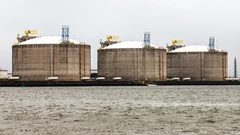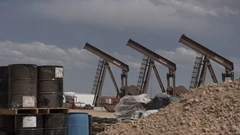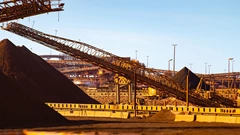bp begins production from Raven Phase 2, offshore Egypt
bp has announced the start of production from the second development phase of the Raven field, offshore Egypt, which involves the subsea tieback of additional Raven infill wells to its existing onshore infrastructure as part of the West Nile Delta (WND) project. bp, the operator, holds an 82.75% stake in the project, while Harbour Energy owns the remaining 17.25%.
The new wells are expected to produce approximately 220 billion cubic feet of gas and 7 million barrels of condensate. The project was safely executed ahead of schedule, allowing for an accelerated start of production.
Nader Zaki, bp Regional President for the Middle East and North Africa, commented: “Since January 2024, we have not stopped drilling for one day. The focus of the Raven Infills project has been to fight natural decline and increase production while maximizing our existing infrastructure to meet Egypt’s domestic market demand at pace. This further demonstrates bp’s commitment to investing in Egypt, enabled by the unparalleled support and partnership with the Ministry of Petroleum, EGPC, and EGAS.”
Wail Shaheen, VP bp Egypt, added: “The safe start-up of this project follows our recent announcement of the successful completion of the El King exploration well. This series of achievements embodies our ongoing commitment to helping meet the increasing local energy demand by optimizing production from available resources while adding new ones.”
Raven Infills is in line with bp's drive to deliver as a simpler, more focused, higher-value company by maximizing production from existing assets and optimizing resource efficiency.
The WND Gas Development comprises a series of gas condensate fields located offshore Egypt, within the North Alexandria and West Mediterranean Deepwater concessions. The Raven field, the final phase of the WND project, has been in production since early 2021. Its initial phase included the development of eight subsea wells, located up to 65 km offshore, at water depths ranging from 550 to 700 metres.
KEEPING THE ENERGY INDUSTRY CONNECTED
Subscribe to our newsletter and get the best of Energy Connects directly to your inbox each week.
By subscribing, you agree to the processing of your personal data by dmg events as described in the Privacy Policy.
More gas & LNG news

Winter Chill Gripping Central US Breaks Temperature Records

Frigid Blast Bears Down on 100 Million People Across the US

EU to Look at More ‘Flexible’ Filling of Gas Storage Post-2025

Diamondback Nears Permian Deal to Buy Shale Producer Double Eagle

Australia’s Iron Ore Hub Reopens, Rio Mines Resume After Cyclone

Australia’s Iron Ore Export Hub to Reopen After Cyclone Weakens

Severe Cyclone Makes Landfall Near Australia’s Iron Ore Hub

Gas Traders Leave Essen Hungry for More on German Storage Plans

AG&P Pratham and THINK Gas toast the merger of their two brands
















